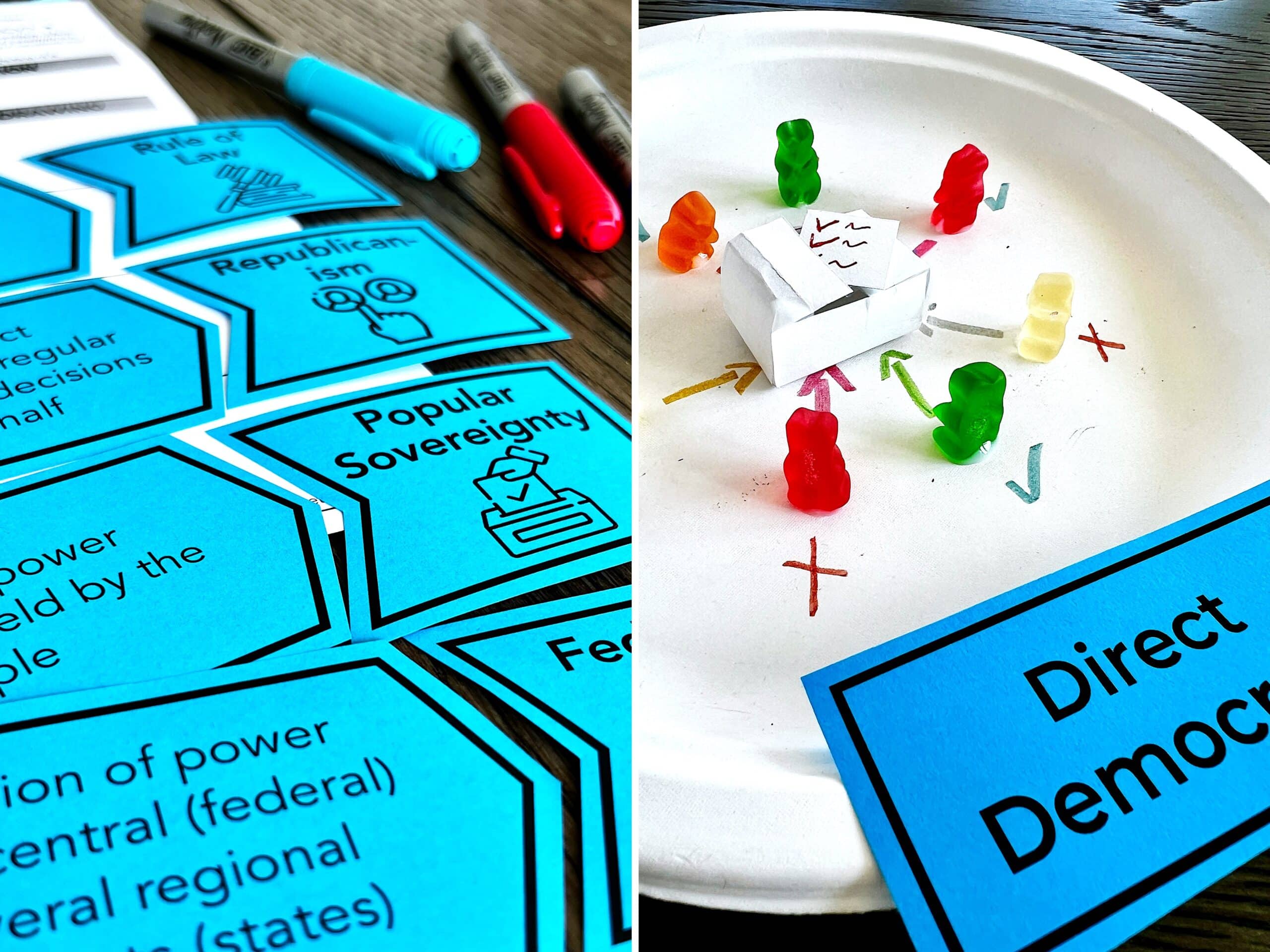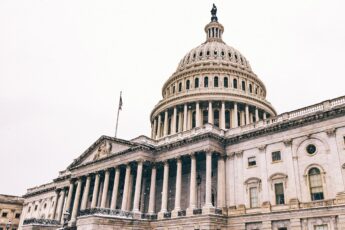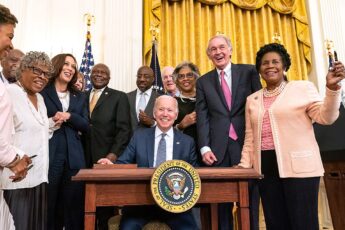Teaching civics and government is different from teaching history—it really requires a different set of go-to lesson ideas and projects.
So, if you are brand new to the subject and need to know everything about how to teach civics, or you’re struggling to find ways to go beyond the textbook, welcome!
It can also feel like sticking to the textbook and facts is the only way to teach civics during polarizing times, even when we know doing that is super boring.
But there are many ways to get students thinking deeply and practicing being engaged citizens. Below are some of my favorite activities from my high school Civics classroom. Many of them should also work great if you teach middle school.
Click below to head straight to each strategy. As you read about each one, brainstorm ways to include them in your civics units.
Sorting Activities
Stations and Gallery Walks
Current Events & Political Cartoons
Authentic Projects
Simulations & Hands-On Activities
Sorting Activities
With a concept-heavy subject like civics and government, just about every major topic can be enhanced with manipulatives like cards.
The easiest method is to create matching card decks. Put all the concept names on a bunch of cards, then their definitions on other cards. You can also make a bunch of cards with real-life examples to pair with the concepts. I like to use photos of government events in action.
These make great informal pre-assessments, mid-unit practice, or review before the final test.
Check out my card sort set of all three branches of government and includes over ten game and activity ideas you can do with them.
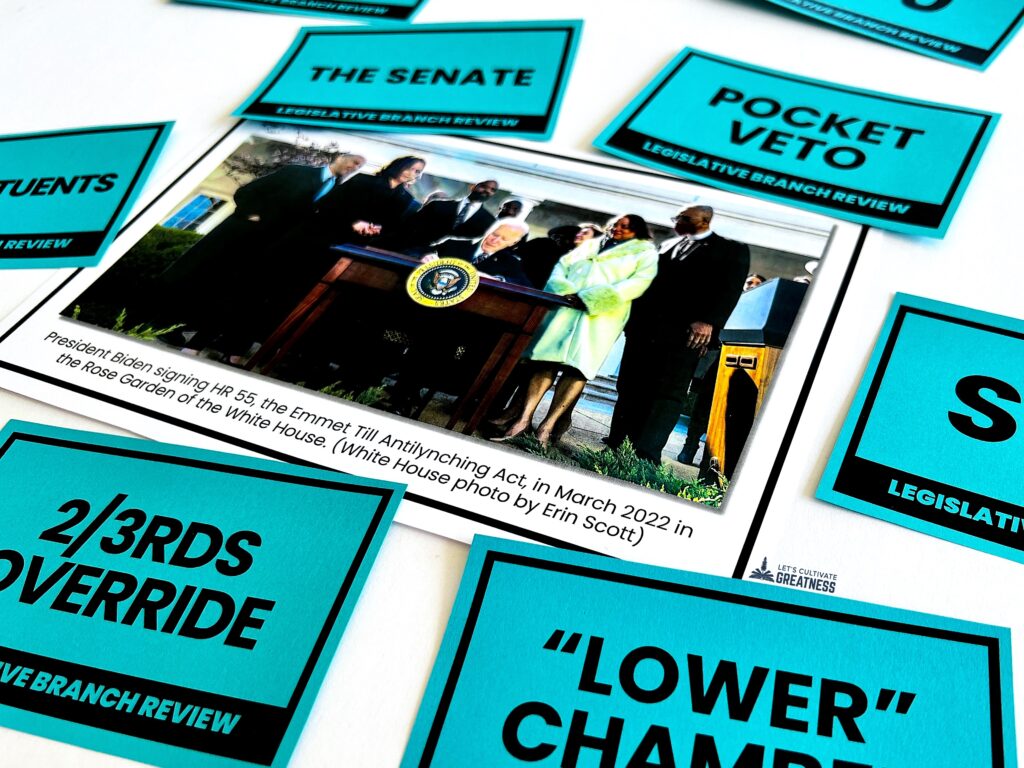
You can also create cards for students to prioritize in some way. For example, have cards with various aspects about Congress for students to sort from “most democratic” to “least democratic.”
I even use a card sort as the hook for my Voting and Election unit. Students are given cards with years and groups of people on them.
Students must guess when different groups in America received the right to vote by matching and sorting card pairs chronologically. After we learn the dates during a lesson on voting rights, we compare their order with the real dates. This Voting Rights Timeline lesson is a free download in my shop.
Another easy card sort is to challenge students to organize the steps for how a bill becomes law into order. You can read more about it in this blog post.
Stations & Gallery Walks
Stations and gallery walks work great when covering a topic with many examples or parts.
These two activities are set up similarly, involving mini-activities around the room. Students have a stimulus and a task for each activity. As they complete them, they either add to a worksheet they carry around or something that stays at the activity. Then, they rotate to the next one.
Here’s how I distinguish the two:
Stations are when fewer than ten subtopics are set up around the room. Students then spend several minutes deeply engaging with the task at each station.
They are a great way to learn about various or landmark Supreme Court cases or the powers and roles of the presidents.
Gallery walks are when there are a dozen or more items, and the task only takes a minute or two. And often, students are repeating the task at each one.
Whenever students make one-pagers, like on members of the Cabinet, Congress, and the Supreme Court, we’ll tape them to lockers up and down the hallway to view as a gallery walk.
Both activities get students up and moving, and I can casually pop in and out of students’ conversations without feeling intrusive.
Current Events & Political Cartoons
Tabs open to the front page of news organizations are a standard in my classroom. I can’t urge you enough to subscribe to at least one national newspaper—it’s essential to being a Civics teacher.
No matter the civics topic you’re in the middle of teaching, related events are going to be in the news.
What Congress, the President, or the Supreme Court are doing this week makes easy bell ringer activities. Have students describe the event using terms they’ve just learned. Or display a political cartoon of the event for students to analyze.
Be sure to grab my FREE Political Cartoon Analysis Kit for a complete how-to guide and student materials.
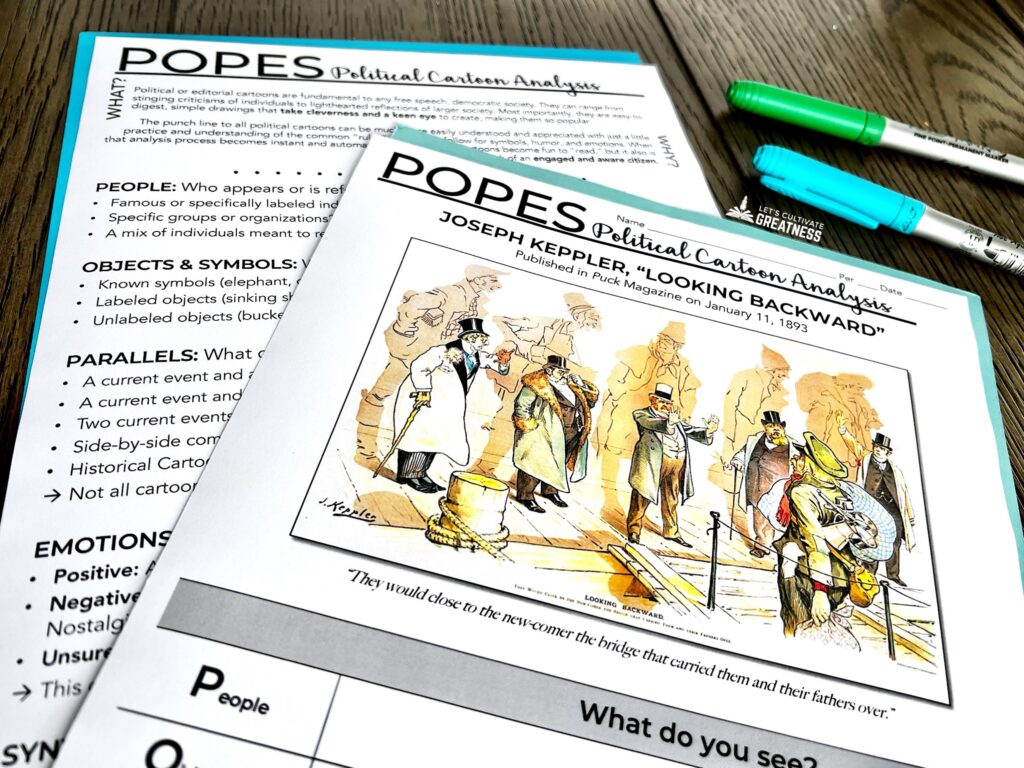
Also, your main unit activities should incorporate current events, not just a separate bell ringer.
For example, I use cartoons to help teach the key principles of the Constitution. We do a gallery walk where students analyze recent cartoons and then have to decide which principle they illustrate. You can read more about it in this blog post.
You can also have students examine things like upcoming cases on the Supreme Court‘s docket or the current president’s approval rating. I have both activities in my Three Branches Real-World Activity Kit.
Authentic Projects
Teaching Civics creates so many opportunities for real-world learning. The easiest is making civic engagement a part of your class.
Have students attend school board or city council meetings, write letters to the editor of your local paper on issues that matter to them, and, if they are old enough, get them pre-registered to vote.
I combined all these civic participation activities into a BINGO-style course-long project where students complete a specific number but get to choose which ones they want to do.
Another way to add more PBL-style projects is to tweak what you already do. My state requires an EOY research project instead of an exam, so I tweaked mine just a bit to create a layer of authenticity.
Students must research and write an essay on a Constitutional issue requiring an amendment. To spice it up, I reframed the project so that students act as advisers to the President and offer their recommendations.
Students do the same research and writing, but the scenario makes it more engaging.
Another PBL project I love is having students deep-dive into their First Amendment rights. To demonstrate their understanding of what they can and can’t say, they design a “free speech” button, and if their design is constitutionally protected, we make it right there in class.
Students will put them immediately on their backpacks or jackets. You can grab my Free Speech Button Project Kit here.
Quick Simulations & Hands-On Activities
When the words simulation and civics are used in the same sentence, most people think of mock lawmaking sessions or mock trials, which can take up a lot of class time.
Thankfully, there are all sorts of one- or two-day simulation-style and hands-on activities to teach Civics.
Some easy ways to create hands-on simulation-style activities are mimicking the Electoral College system and comparing it to alternatives with a simple dice game.
Or using gummy bears to depict the various principles of the Constitution. This activity is always a hit with students.
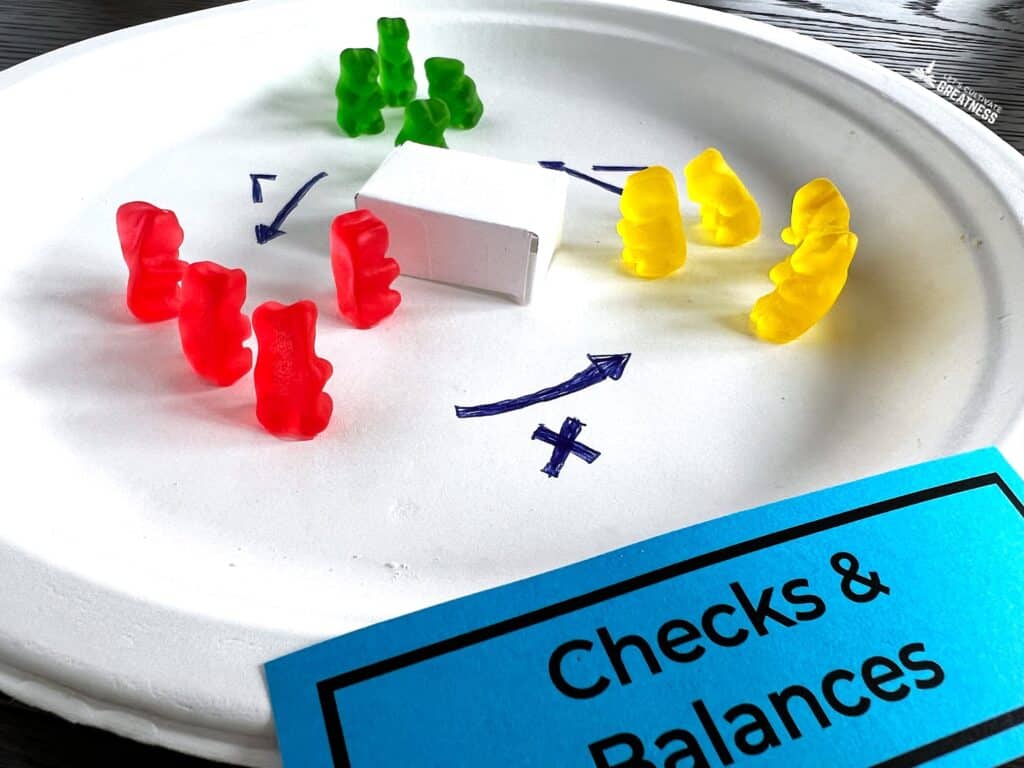
You can read more about how I teach this topic in this blog post.
My favorite unit-long simulation is preparing for Election Day by researching the candidates and issues on the ballot and then holding a mock election.
During one class period, have students explore how to register to vote. Then, for another, have them research the candidates’ websites and the voter’s pamphlets. If a bigger race is happening, show a televised debate. Then, on Election Day, let them vote and compare their data with the results.
These activities target essential media literacy and civics standards and are available in my Voting & Election unit.
I hope these doable ideas help you incorporate engaging real-life civics activities into your classroom! Look at each of your units and try to add at least one of these kinds of activities to each one.
If you’re new to teaching Civics and need everything, check out my full Civics & Government curriculum.


